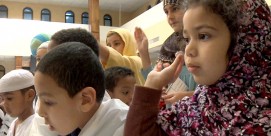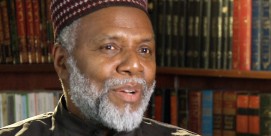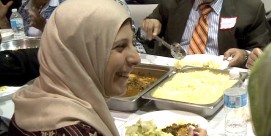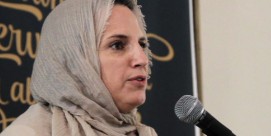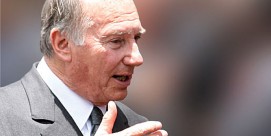Defamation of Religion: An American Perspective
Since 1999, several predominantly Muslim countries have campaigned for the United Nations to adopt an international ban on defaming religion. The United States has consistently opposed such a ban, arguing that it would violate freedom of speech, freedom of the press, and freedom of religion. From August 9-13, 2010, the Media Project sponsored a conference in Jakarta, Indonesia for journalists from around the world to discuss regional perspectives on banning defamation of religion and how such measures could affect freedom of the press. Watch a video report produced by Religion & Ethics NewsWeekly managing editor Kim Lawton and presented at the conference.
How does the defamation debate affect members of the news media in the US? Read an excerpt from Kim Lawton’s conference paper:
“It is nearly impossible to be a journalist and not insult someone,” says Debra Mason, director of the Center on Religion & the Professions at the Missouri School of Journalism. “Whether or not we insult someone should not be the factor that determines whether or not we cover a story or how we cover a story.”
Mason asserts that journalism is a profession which must be guided by a code of ethics and shared values of fairness, accuracy, and balance.
“When it comes to certain ‘fault lines’, including religion, journalists must take extra care and make sure they are not making fun or mocking or insulting someone based on their beliefs,” she says. “That doesn’t mean we ignore scandals or abuses by prominent religious leaders, but it does mean we don’t intentionally do something that is anathema to a particular group if it’s not essential to our reporting.”
In the case of the Danish cartoons, American news media outlets wrestled intensely over whether showing the cartoons was essential in reporting about the controversy. Most major American newspapers, including the New York Times, the Washington Post, and the Los Angeles Times decided not to print the cartoons. The Associated Press wire service also chose not to distribute them. Most major television news broadcasts followed suit, with the exception of ABC and CNN, which only ran a disguised version of one cartoon.
Religion & Ethics NewsWeekly also reported on the protests without running the cartoons. We do broadcast images of Muhammad from classical art, but we don’t have a specific rule of thumb for what crosses the line. The decision not to run the controversial cartoons came after much internal debate.
“Because the cartoons were the cause of so much tension and potential violence, I felt we should not unnecessarily inflame or add to that,” says Religion & Ethics NewsWeekly executive producer Arnold Labaton. “It was troublesome not showing them, but it wasn’t that they weren’t available elsewhere, such as on the Internet.”
Says Labaton, “We have to consider the bounds of responsible behavior. That probably was a capitulation, but it was a capitulation I could live with.”
The decision of so many news outlets against running the cartoons came under strong criticism, including a stinging editorial in the Washington Post co-written by conservative analyst William Bennett and liberal attorney Alan Dershowitz.
“To put it simply,” they wrote, “radical Islamists have won a war of intimidation. They have cowed the major news media from showing these cartoons.”
The two went on to complain of a double standard, noting that the same media outlets didn’t hesitate to publish a controversial art exhibit depicting the Virgin Mary covered in dung.
But Mason of the Missouri School of Journalism argues there was a difference in the situations.
“No one was rioting or dying in regard to the art exhibit,” she says. “Journalists must use judgment whenever violence or mayhem is involved.”
Kevin Eckstrom, editor of Religion News Service, a news organization that exclusively covers issues of religion, acknowledges that this beat “tends to be more radioactive than others.” But, he says, “That doesn’t mean we should shirk our duties as story-tellers and truth-tellers. Reporters should be respectful of the beliefs of religious groups, be aware of the problems that can go with that, and be ready to defend their decisions.”
There may not be easy answers, but many Americans believe it’s vital to continue the discussion.
“The price of denying free speech is too high,” says Labaton.
Nina Shea, director of the Center for Religious Freedom at the Washington, DC-based Hudson Institute, agrees. She says America must never forsake its interwoven tradition of freedom of the press, free speech, and freedom of religion.
“The great genius of America is that we’re a very pluralistic society, and we’re all able to get along,” she says. “The key to that harmony—and we do have contentious debate—is freedom of speech and freedom of religion.”

